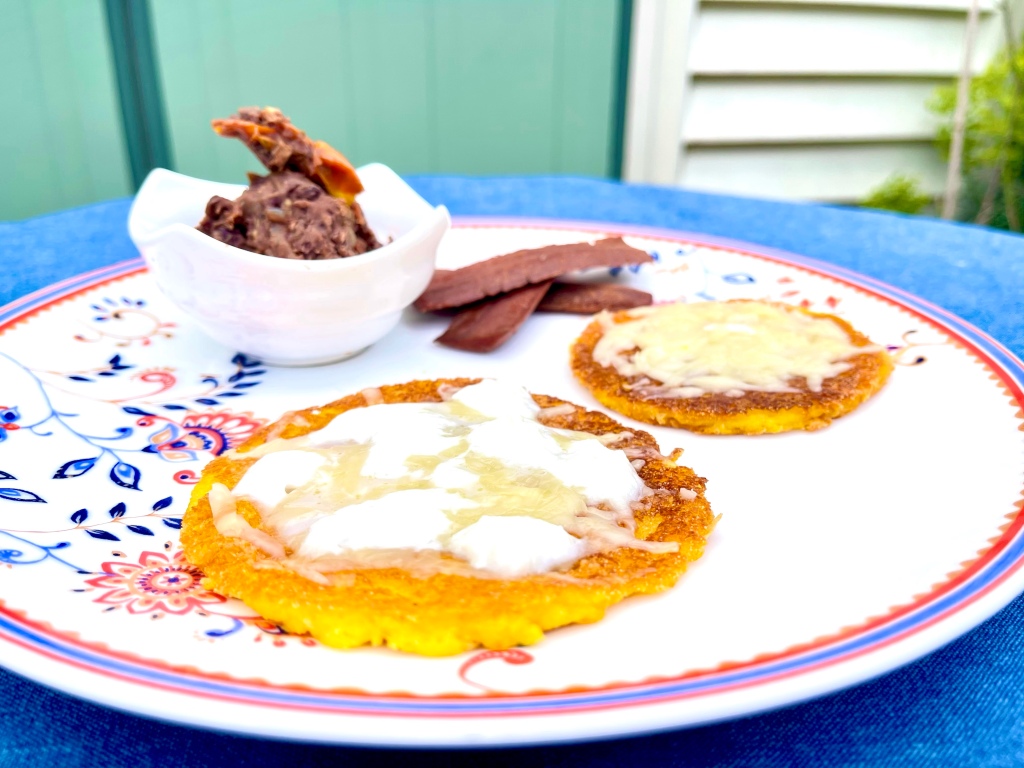world flavours
USE-WHAT-YOU-HAVE MOUSSAKÁ
As a person who grew up in Greece I get asked for Moussaka recipes all the time. Moussaká is really as diverse as each household. Go to http://www.instagram.com/lias_kitchen to read what differentiates Moussaká from other bakes!

In this post we want to demystify one of the most popular dishes of modern Greek cooking. My usual béchamel sauce is one where milk is flavoured with mace or nutmeg in advance and then slowly heated whilst you slowly add flour, butter and one egg. Not really a roux method but something we call Kourkoúti. But to make things simple for you we recommend you make a béchamel (or morney) sauce you know how to make and have provided a link to a BBC recipe.
In the past year I have made Moussaka with what I have. I always have uncooked lentils in my store cupboard and love using them for a vegetarian, use-what-you-have version of the dish. Use 300 to 500g of minced beef if that’s what you prefer. The authentic Moussaka in my mum’s kitchen uses two layers of aubergine but potato is just fine particularly when your vegetable box has too many potatoes you need to use up.
Enjoy our delicious recipe below!
What:
⁃ 3/4 to 1 cup or mug uncooked lentils (brown or green or black)
⁃ 1 onion, chopped
⁃ 3 allspice berries, crushed (optional)
⁃ 1/2 cup white wine
⁃ 3 to 4 garlic cloves, finely shopped
⁃ 1 tin chopped tomatoes
⁃ 500ml hot water (2cups)
⁃ 30g chopped parsley
⁃ Bay leaf (optional)
⁃ 1 egg beaten
⁃ 1/2 cup breadcrumbs
⁃ 250g crumbled or greater goat or ewe’s cheese such as feta, Abergavenny goat, manchego, pecorino or graviera.
⁃ Salt
⁃ 1 béchamel portion of your choice
⁃ Mace + bay leaf or just grated nutmeg to flavour
⁃ Half kg potatoes or as many it takes to fill a medium baking tray, sliced in circles of 1.5 to 2cm thickness
⁃ Mix of vegetable and olive oil to shallow fry
What:
1. Soak the lentils for an hour or two (optional).
2. Start with making the lentil filling.
3. Fry the onion in 2tbsp. Olive oil with a pinch of salt for 5min.
4. Add the drained lentils, a pinch of pepper and the crashed allspice berries and fry for a couple of minutes.
5. Add the wine, stir and follow with the tinned tomatoes & hot water.
6. Add another couple of pinches of salt, the bay leaf (if using) and the chopped parsley.
7. Cover and simmer for 30.
8. Whilst the sauce is simmering make a béchamel portion of your choice and fry the potatoes till mostly cooked.
9. Use 2-3 Tbsp. Vegetable oil and 2 Tbsp. Olive oil to fry the potatoes.
10. Make sure to cool down the lentil sauce before adding the beaten egg, cheese or mix of cheeses your choice and breadcrumbs. Taste and season if necessary.
11. In a medium baking tray at least 10cm deep, layer the potatoes, the lentil sauce smoothed across the surface and then the bechamel sauce.
12. If you want sprinkle with some more breadcrumbs and cheese.
13. Bake in an 170 Celsius degree fan oven for 45 min or until golden.
ANA MARIA & JUAN’S AREPAS DE CHOCLO
This is a very special recipe shared with us by Ana & Juan, two siblings born in Colombia and now living in different parts of the world. Sharing and making recipes, such as these sweetcorn arepas (arepas de choclo), from places we call home help us feel closer to each other when we are too far to hug. Thank you Ana Maria Millan and Juan for sharing a tasty treat and transporting us to your Mum’s Colombian Kitchen table, in that flat that was bought precisely because it could fit a table large enough to gather friends and family as its focal point of togetherness. Much love and respect to Ana’s wonderful Colombian Mama and all the Mamas many of us miss from afar! Thank you to Ana who shared this recipe and her words, which make up most of this post. Ana was born in Colombia and has been living in the UK for nearly 20 years.
Arepas are a traditional food of Latin America, and they come in many varieties. Some are made with different types of corn (e.g masa harina) or rice flour. They are eaten as part of a meal or as a meal itself. This recipe is made with young sweetcorn (choclo) and a mix of flours.
Ana says, ‘I like it because it is sweet, and also because it helps me bring together some of the components of my multi-cultural family: a Colombian recipe with Dutch cheese. My husband is Dutch so we try to make the most of both worlds. Although I only started making arepas after moving to the UK, this recipe takes me home, to my mum’s kitchen. The ideal way to have these is with Colombian hot chocolate, with cheese inside (but that’s another story).’
‘For us sharing food is very important. Growing up we always had dinner together – it was the time of the day when we would sit together and talk about our day and anything that was happening. And, that is something that I do with my family too – dinnertime is family time.’

What (feeds 2)
- 2 cups or 340g sweet corn kernels (use defrosted or tinned + drained)
- ½ cup or 110g flour – use either masa harina OR gluten free flour OR a mix of gluten free and fine cornmeal ground furtner in a stone pestle or mortar
- 1 teaspoon of softened butter or coconut oil
- 4 Tbsp. or around 60ml milk (dairy or vegetable)
- Pinch of sugar
How (30min)
- Place the sweetcorn in a food processor until it is mushy, but not smooth. Some kernels should be visible.
- Heat the milk and melt the butter of choice.
- Add the flours and sugar to the blender and blend till smooth.
- The batter should look like thick porridge but it should not be too stodgy. If it is too thick, dilute it with some more milk.
- Use a large non-stick pan to fit many small pancakes or a smaller to make 2-4 large ones.
- Heat a little bit of butter until melted. Pour the mixture in small or larger circle shapes. Flatten to about 1cm thickness (not too thin but a little bit more like an American or blueberry pancake).
- Cook on low heat until it is nice and golden for about 3-5 minutes.
- Flip over carefully so it doesn’t break. Put the sliced or grated cheese on top and cook for another 3-4 minutes. You can fold in half and flip over to melt cheese further.
- Serve and enjoy.
Lia’s Tips
- My perfect Ana & Juan arepas used a mix of gluten free flour and fine cornmeal (used for cornbread) ground down further in a stone pestle and mortar.
- Gluten free flour arepas were the second best.
- Heating up the milk to melt the butter worked really well.
- After my third attempt, I realised that the best way to blend the mix well was to add all the ingredients to the blender after first blending the corn kernels
- I used round metal moulds/cooking rings to make my round arepas. It helped my shape them and spread them thinner but they were mostly 2cm thick. I made mine about 10cm wide so the recipe quantity yielded between 8-10 small arepas.
- I LOVED using oat milk and coconut oil in my arepas. Ana is right it enhances the arepa sweetness
- I LOVED Ana’s Colombian/Dutch family tradition of using Edam cheese for the filling. It’s saltiness counterbalanced the arepa sweetness perfectly.
- Torn shreds of mozzarella was the second best cheese to use.
- I didn’t always fold the arepa as mine were mostly small.
- I loved serving with vegan or crisped up real bacon. Yum!
- Yes, I did the full Colombian thing and had chocolate with those. However, sweetened milky coffee was amazing too.

